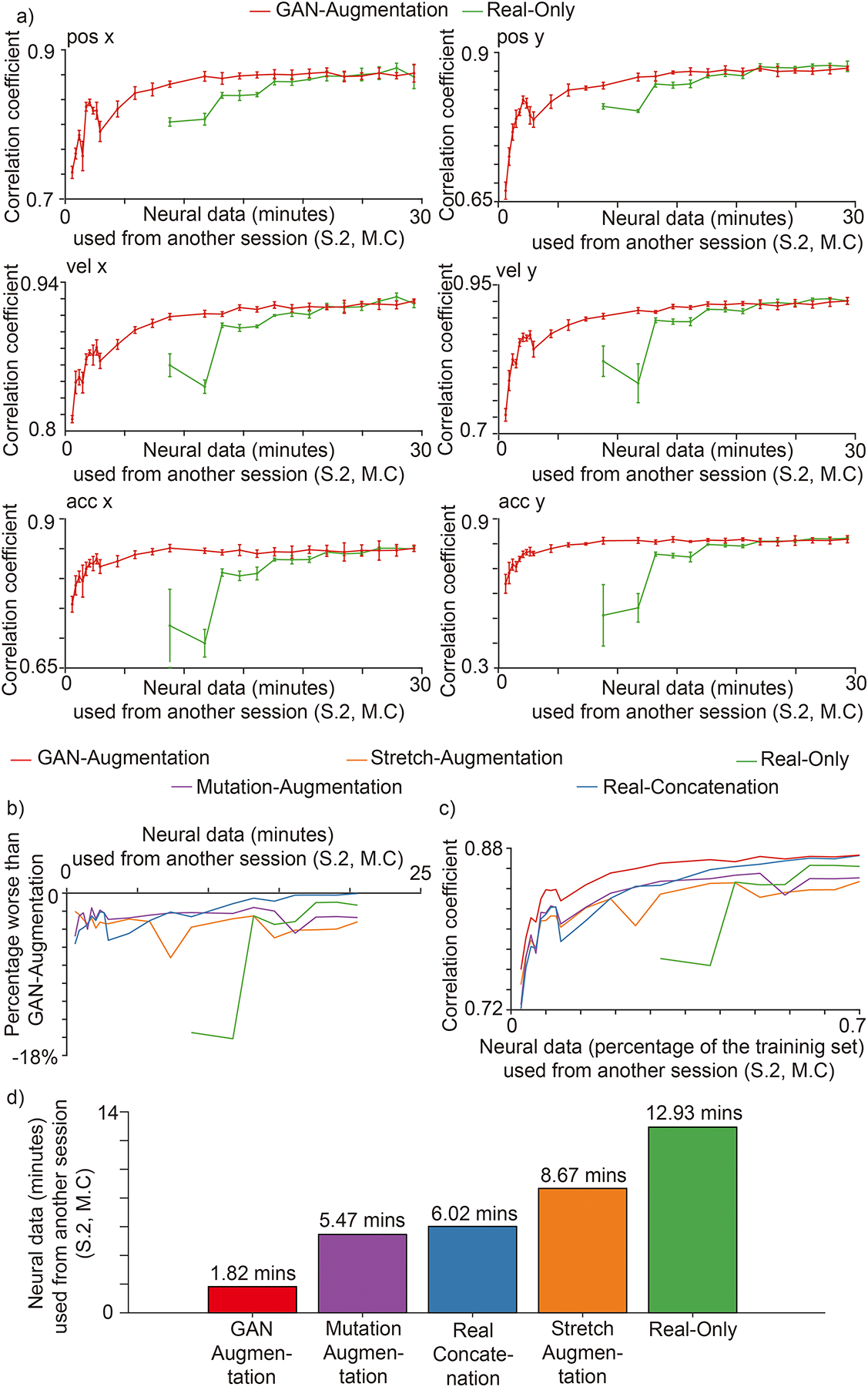Fig. 6 |. Cross-session decoding.

There are six methods: GAN-augmentation (red) mutation-augmentation (purple), stretch-augmentation (orange), real-augmentation (blue), real-only (green). The cut-off time for (b) and (c) is 20.53 minutes - the minimum amount of time needed for other methods to achieve performance comparable to GAN-augmentation. a, The performances for each kinematic in 5-fold cross-validation. The horizontal axis is the number of minutes of neural data from the session two of Monkey C used. The vertical axis is the correlation coefficient (mean + / − S.D., n = 5 folds) between the decoded kinematics and real kinematics on an independent test set from the session two of Monkey C. Synthesized spike trains that capture the neural attributes accelerate the training of a BCI decoder for the cross-session decoding. b, Average percentage performances worse than GAN-augmentation method. The horizontal axis is the number of minutes of neural data from the session two of Monkey C used. The vertical axis is the average performance for all six kinematic signals of each method worse than the average percentage performance of GAN-augmentation method. c, Average performances presented similar to receiver operating characteristic (ROC) curve. The horizontal axis is the percentage of neural data from the training set of session two of Monkey C used. The vertical axis is the same as a). d, Amount of additional neural data (S.2, M.C) needed for each method to achieve accuracy saturation (>=95% of the peak for real-only method training on all neural data from S.2, M.C).
